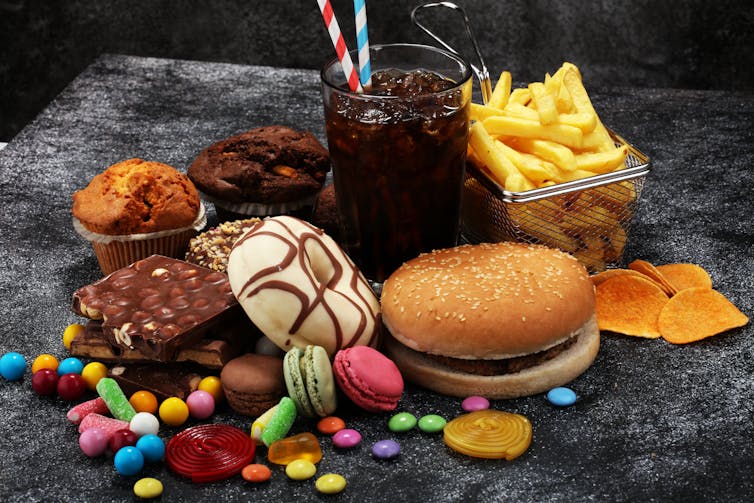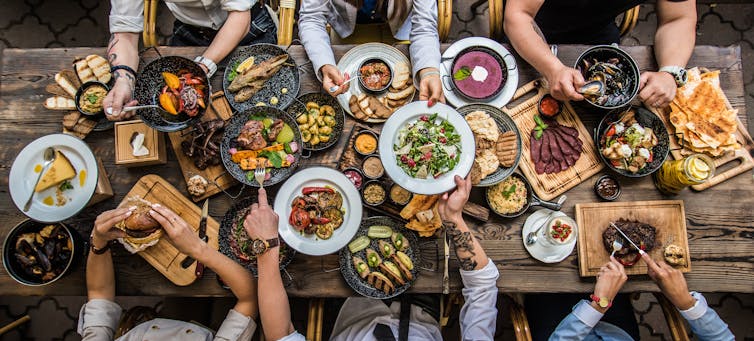I’ve a radical suggestion: let’s ban processed and ultra-processed meals. Not the merchandise, however the phrases.
With so many weight loss plan plans and dietary directions providing such different recommendation on find out how to eat healthily, a easy message like avoiding processed meals is understandably enticing. Consequently, some journalists, social media influencers and even well being charities and lecturers have gathered behind the concept that processed meals is dangerous for you – and so-called ultra-processed meals is even worse.
This place has been taken to detailed extremes, with commandments to not eat meals with greater than 5 substances, with greater than 5 steps in its manufacture, and even that comprises any preservatives, “chemical substances” or something made in a manufacturing unit.
As a meals scientist, I feel such blanket recommendation, whereas straightforward to recollect, is in the end unhelpful. The demonisation of processing promotes misunderstanding and distrust of the methods wherein science and manufacturing truly make meals higher for us.
For a begin, all meals is processed, and that’s a superb factor. Processing is something that transforms meals from uncooked supplies to one thing extra appropriate for human consumption. It will possibly make meals safer, extra digestible and fewer inclined to undesirable adjustments, whereas retaining or bettering its dietary and aesthetic qualities.
At its easiest, processing is cooking, the invention of which has been highlighted as a key step in human evolution as a result of it allowed us to soak up extra vitality to gas our more and more highly effective our bodies and brains. Immediately, in addition to a variety of warmth therapies that kill germs, different widespread processes used to protect meals embody drying, fermentation, filtration, and freezing. In recent times, superior therapies involving ultra-high pressures or pulsed electrical fields have been proposed to make meals safer to eat whereas preserving its style, texture and dietary worth.
Learn extra:
Uncooked milk: the advantages are unclear however the risks are actual
So why has the time period “processed meals” change into so unfavourable? Partly it’s as a result of the time period extra usually now refers to what’s in a meals merchandise and its dietary info. Particularly, it’s used to focus on meals with excessive ranges of salt, sugar or fats, which may be linked to a vary of well being issues.

beast1/Shutterstock
But “processed meals” can be usually used to point merchandise that comprise a lot of substances, notably what some deem “chemical” components. It’s true that meals that haven’t had something added to them can’t comprise further salt, sugar or fats. However there is no such thing as a correlation between the variety of substances and a product’s high quality or security.
In the meantime even easy meals merchandise are more likely to be made up of many chemical elements. For instance, a banana comprises fructose, maltose, tocopherol, phylloquinone and 2-methylpropan-1-ol. An apple comprises acetic acid (E260), tartaric acid (E334), carotene (E160a), ascorbic acid (vitamin C, E300) and citric acid (E330), amongst different compounds.
These aren’t substances, you would possibly say, however pure elements. Mixing them collectively in a blender in the identical proportions wouldn’t give the fruit again, and even the identical dietary profile. This can be the case, however they’re nonetheless very intelligent assemblages of chemical substances, usually the very same chemical substances that may be present in manufactured meals merchandise with lengthy lists of added substances.
Pure isn’t essentially higher
Many of those added chemical substances are derived from pure sources. Others are sometimes artificially synthesised variations of naturally occurring compounds, corresponding to beta-carotene, which may be present in carrots, or vanillin, which is liable for the flavour in vanilla. If the molecules from the manufacturing unit and people from the carrot are similar, why is one seen as totally different to the opposite? Would it not be preferable to have far more expensive and wasteful processes to extract them from their pure sources?
Different substances are usually not present in pure meals sources, and there’s no query that, previously (certainly for hundreds of years), issues had been added to meals that weren’t protected. For instance, lead and mercury had been as soon as used as meals colouring. Nonetheless, immediately the meals trade in lots of nations is extremely regulated, and fashionable understanding of meals science and security has resulted within the prohibition of doubtless dangerous components.
In Europe, meals components are given codes often called E-numbers. Analysis from 2007 that discovered six out of the tons of of current E-number components had been linked to hyperactivity in youngsters led to the time period changing into a pejorative description. However meals containing any of these six compounds should now carry a warning label, whereas in all different instances an E-number truly displays the truth that an additive has been examined and licensed protected.

Olga Klochanko/Shutterstock
The opposite factor to recollect about all of the added substances in meals merchandise is that together with them prices the producers cash and they also should serve a operate. Immediately, shoppers have an enormously numerous vary of wants, and meals have gotten more and more specialised and tailor-made, with classes for infants, the aged, vegans, folks with allergic reactions and plenty of different particular markets.
Making merchandise that meet these folks’s dietary wants and nonetheless style good usually depends on massive numbers of substances. Specialised merchandise are wanted to interchange the vitamins of milk, the springiness offered by gluten, or the feel of meat. Meals science has solved these issues by fastidiously optimising substances and management of their behaviour, from plant proteins for diet to xanthan gum for texture.
In the end, all meals is fabricated from chemical substances, all substances have features, and meals merchandise are usually not random assemblies of compounds added for no purpose. These merchandise are formulated to offer them the quantity and kind of substances they should present the dietary, sensory, stability or security attributes that buyers demand and laws permits – no extra and no much less.
The deserves of a meals shouldn’t be judged on the idea of its ingredient listing, and meals processing just isn’t one thing of which we needs to be suspicious. However understanding processing, and what substances are in meals and why they’re there, has by no means been extra vital.

